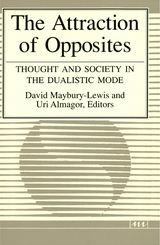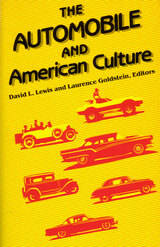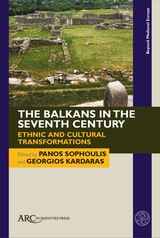4 books about Epitaphs

Alarms & Epitaphs
The Art of Eric Ambler
Peter Wolfe
University of Wisconsin Press, 1993
Eric Ambler's novelistic career falls into two halves. In the first half belong the works he published between 1935–1940. These include the highly acclaimed Epitaph for a Spy (1938) and The Mask of Dimitrios (1939), both of which were made into successful films in 1944. The intrigue books of this period unfold in interwar Europe, a bitten-up, anxious place reeling between the extremes of fascism and Soviet communism. To reflect changes in the postwar world, Ambler set his later books in third-world countries where first-world financing collides with unstable, often revolutionary, politics—all within the shadow of large multinational corporations. These powerful firms with connections in high places take the same liberties as big governments have always done in works like Dr. Frigo (1974), the only Ambler book set in Latin America, and the best-selling The Care of Time (1981).
[more]
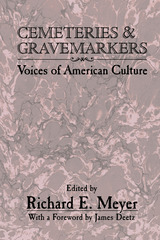
Cemeteries Gravemarkers
Richard Meyer
Utah State University Press, 1992
Cemeteries house the dead, but gravemarkers are fashioned by the living, who record on them not only their pleasures, sorrows, and hopes for an afterlife, but also more than they realize of their history, ethnicity, and culture. Richard Meyer has gathered twelve original essays examining burial grounds through the centuries and across the land to give a broad understanding of the history and cultural values of communities, regions, and American society at large.
[more]
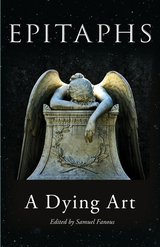
Epitaphs
A Dying Art
Edited by Samuel Fanous
Bodleian Library Publishing, 2016
Epitaphs are words to be remembered by, short poems or phrases literally written in stone. They can be practical, carrying some variation of the familiar “Here Lies,” but they can also be brilliantly creative with personally meaningful quotes or words written especially by or for the deceased. From the simple to the cleverly cryptic, epitaphs are meant to leave a lasting impression—and many certainly do.
Epitaphs brings together more than 250 epitaphs from cemeteries, churchyards, monuments, and historical records. Some announce the cause of death with a surprisingly macabre sense of humor: “Here lies John Ross. Kicked by a hoss.” Others wryly remind readers of their own impending mortality, such as a tombstone whose rhyming inscription reads “As I am now you will surely be. / Prepare thyself to follow me.” In death as in life, many of the most famous writers were not at a loss for words. Emily Dickinson’s concise wit is evident in her headstone’s inscription “Called Back.” Yeats encouraged the horsemen of the apocalypse to “pass by.” Shakespeare’s funerary monument at Stratford-upon-Avon carries the warning “Curst be he that moves my bones,” an inscription many believe the Bard himself wrote to prevent his corpse from being exhumed in the name of research, a common practice at the time.
As tribute to a form of expression that is very much alive, Epitaphs collects some of the most intriguing examples, many of which perfectly encapsulate the person buried beneath them.
Epitaphs brings together more than 250 epitaphs from cemeteries, churchyards, monuments, and historical records. Some announce the cause of death with a surprisingly macabre sense of humor: “Here lies John Ross. Kicked by a hoss.” Others wryly remind readers of their own impending mortality, such as a tombstone whose rhyming inscription reads “As I am now you will surely be. / Prepare thyself to follow me.” In death as in life, many of the most famous writers were not at a loss for words. Emily Dickinson’s concise wit is evident in her headstone’s inscription “Called Back.” Yeats encouraged the horsemen of the apocalypse to “pass by.” Shakespeare’s funerary monument at Stratford-upon-Avon carries the warning “Curst be he that moves my bones,” an inscription many believe the Bard himself wrote to prevent his corpse from being exhumed in the name of research, a common practice at the time.
As tribute to a form of expression that is very much alive, Epitaphs collects some of the most intriguing examples, many of which perfectly encapsulate the person buried beneath them.
[more]
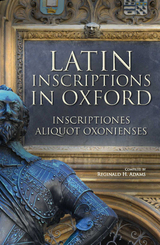
Latin Inscriptions in Oxford
Compiled with Translations by Reginald H. Adams
Bodleian Library Publishing, 2015
For six centuries following its foundation, Latin was the main language written and spoken at the University of Oxford. Today, one can still find Latin inscriptions carved into many of its monuments, as well those of the city, dating from the medieval period to the present day. But few of us can discern what all of these inscriptions mean.
For Latin Inscriptions in Oxford, Reginald H. Adams, a former scholar at St. John’s College, University of Oxford, has translated a selection of Latin inscriptions. Among them, he finds a great many tributes and memorials—to Queen Anne, Cardinal Wolsey, and T. E. Lawrence, but also to Irene Frude, a “most kindly landlady” on Little Clarendon who “provided each day for almost thirty-five years enormous breakfasts.” Some of the inscriptions offer concise commentary—“Without experiment, it is not possible to know anything adequately.” While others are instructive like the Rhodes House’s warning, “Let no one who is smoke-bearing enter here.”
Evocative mementoes of the past, the inscriptions collected by Adams bring insight to the vivid history of Oxford, the city and the university.
For Latin Inscriptions in Oxford, Reginald H. Adams, a former scholar at St. John’s College, University of Oxford, has translated a selection of Latin inscriptions. Among them, he finds a great many tributes and memorials—to Queen Anne, Cardinal Wolsey, and T. E. Lawrence, but also to Irene Frude, a “most kindly landlady” on Little Clarendon who “provided each day for almost thirty-five years enormous breakfasts.” Some of the inscriptions offer concise commentary—“Without experiment, it is not possible to know anything adequately.” While others are instructive like the Rhodes House’s warning, “Let no one who is smoke-bearing enter here.”
Evocative mementoes of the past, the inscriptions collected by Adams bring insight to the vivid history of Oxford, the city and the university.
[more]
READERS
Browse our collection.
PUBLISHERS
See BiblioVault's publisher services.
STUDENT SERVICES
Files for college accessibility offices.
UChicago Accessibility Resources
home | accessibility | search | about | contact us
BiblioVault ® 2001 - 2025
The University of Chicago Press


